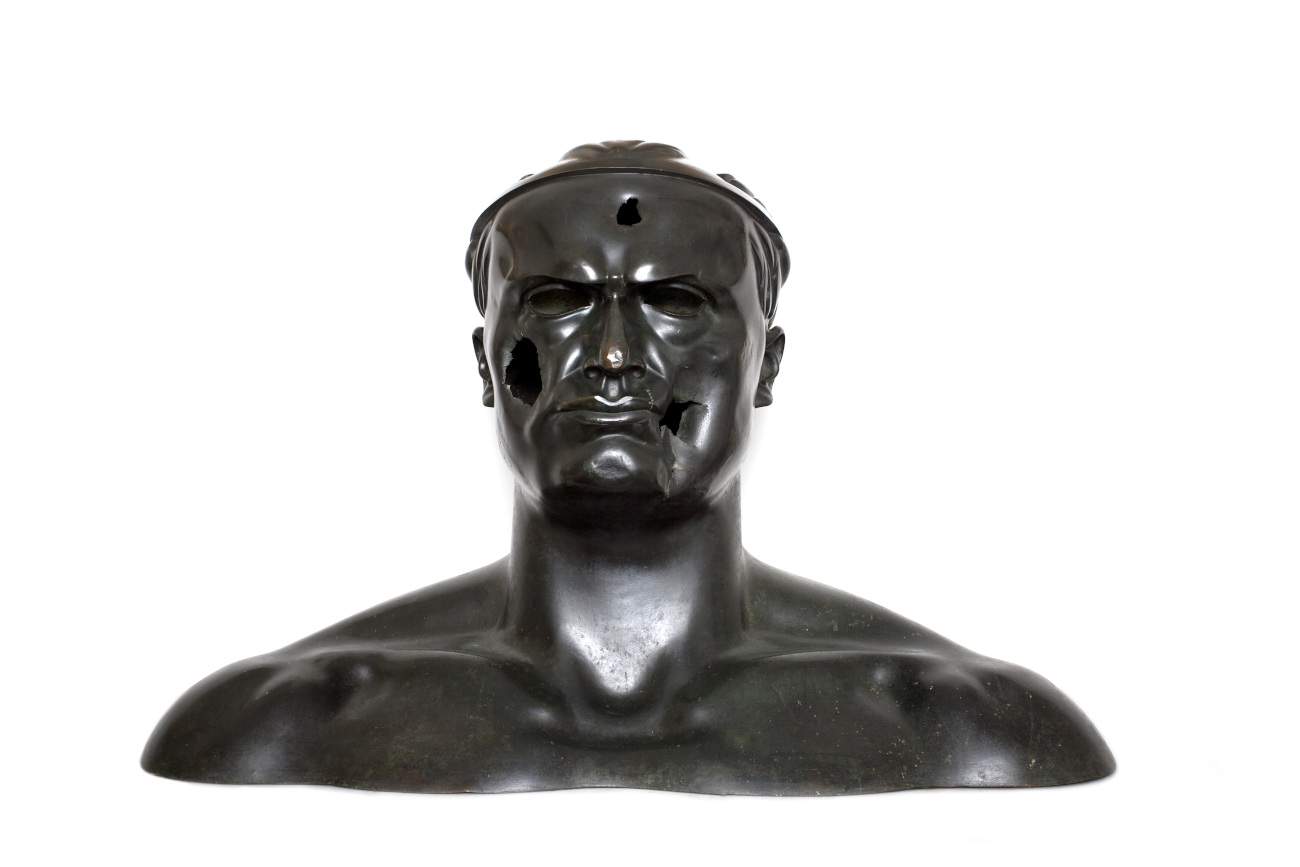Art and Fascism: an exhibition on the subject at the Mart in Rovereto, with 400 works
The exhibition Art and Fascism, from an idea of Vittorio Sgarbi, curated by Beatrice Avanzi and Daniela Ferrari, opens April 14, 2024 at the Mart in Rovereto and will be on view until September 1, 2024. The exhibition aims to examine the multiple ways in which the fascist regime influenced Italian artistic production, exploiting the languages of art and architecture for propaganda purposes.
Rooted in the preceding decades and embracing a wide range of artistic practices, the visual culture of the Ventennio witnessed the growth of an unprecedented variety of styles. It incorporated various artistic trends emerging in the historical context of the period: thus a heterogeneous and dynamic artistic landscape emerged, characterized by multiple expressions and currents. Alongside the persistent experimentation of the avant-gardes linked to Futurism, a current of “return to order” emerged, represented by the Novecento Italiano movement, promoted by Margherita Sarfatti. This return to the past, functional to the enhancement of the Italian tradition, manifests itself in various forms, from the renewed interest in the old masters by twentieth-century artists to the most radical forms of propaganda art aimed at consolidating consensus. The exhibition aims to explore these dynamics in depth, to offer the public a detailed look at the complexity and diversity of art produced during the Fascist period, and its relationship to the politics, society and culture of the time.
The model of a renewed balance between tradition and modernity enjoyed wide acceptance by the fascist regime, which sought to define an organized system of the arts. Participation in events such as biennials, quadrennials, syndicated exhibitions, competitions and public commissions offered artists the opportunity to express the ideology, themes and myths of fascism. The relationship between artists and power is neither uniform nor defined. Alongside avowedly fascist figures, such as Depero and Sironi, who are fervent supporters of the Duce, there are artists who maintain a less committed position, more or less distant from the regime, but nonetheless present in the rich Italian art scene. At the same time, the new centers of power become vehicles of affirmation through a language open to both classicism and rationalism, involving architecture, sculpture and wall art, which are reborn under the impulse of a renewed will to celebrate.
The exhibition unfolds through a varied selection of works, documents and archival materials, including 400 works by prominent artists and architects such as Mario Sironi, Carlo Carrà, Adolfo Wildt, Arturo Martini, Marino Marini, Massimo Campigli, Achille Funi, Fortunato Depero, Tullio Crali, Thayaht, Renato Bertelli and Renato Guttuso. These works, from public and private collections, dialogue with some of the Mart’s great masterpieces on display and with numerous materials from the archives of the 1900s.
Thereare eight chronological and thematic sections. “Novecento Italiano” focuses on the great project to support artists and culture promoted by Margherita Sarfatti, an intellectual figure and curator ante litteram. “The Image of Power” explores the iconography of the Duce, oscillating between celebrating the leader and spreading the myth. “Futurism. Celebrating Action” delves into the total art of Italy’s leading avant-garde. “Monumental Art” focuses on education and propaganda through great wall art, mosaics, frescoes and decorative monuments. “Architecture and the Relationship to the Arts” presents plans, sketches and abstract works for monumental buildings that aimed to exalt Italian power. “New Myths” explores not only the hero and the athlete, but also the worker, the woman and the family, in search of a virtuous social system. “The Arts System” analyzes the organization of a state art through exhibitions, quadrennials, biennials and competitions. Finally, “The Fall of the Dictatorship” marks the end of an era, exploring the period of the fall of the regime through iconoclasm, satire and drama.
The exhibition layout was curated by Baldessari and Baldessari.
For info you can visit the Mart website.
Image: Adolfo Wildt, Dux (1923; private collection)
 |
| Art and Fascism: an exhibition on the subject at the Mart in Rovereto, with 400 works |
Warning: the translation into English of the original Italian article was created using automatic tools. We undertake to review all articles, but we do not guarantee the total absence of inaccuracies in the translation due to the program. You can find the original by clicking on the ITA button. If you find any mistake,please contact us.





























